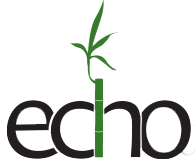You only need to be flexible in your mind to do yoga. Yoga is more than the asana, the postures/poses. It isn't about doing the perfect posture, but coming to your mat and finding a safe place to release your worries, fears and discover the best version of you - which is the light being that you are - peaceful and bright.
I teach from an intuitive space. We work beyond the asanas, the poses, and into other areas such as the breathwork, meditation, energy centers and the eight limbs of yoga.
Since 2020, I’ve moved deeper into offering more meditation practices such as iRest meditation and sound healing. I like to offer these practices in unique settings outside of a typical yoga studio so the practice becomes more accessible to those that may feel intimidated or uncomfortable in a formal yoga studio setting. If you’re a small business or corporation and would like to offer your employees an experience of sound healing, yin yoga or meditation or a combination of these, or if you’d like a private or couples session, please reach out to Marie, 231.206.1133 or echomre@gmail.com.
Yoga encompasses not only the physical movement but also the breathwork, meditation and understanding our energy centers to bring a union among the mind, body and spirit. Or, more simply put, yoga can help you relax, improve circulation, strengthen your muscles, reduce stress and gain energy. When your body, mind and spirit are aligned, you function better as a whole. Regular yoga practice can truly change your life.
Yin Yoga: Time is the magic ingredient
One of the most noticeable differences between yin yoga and other yoga styles is time. How many ways can we say this? In yin yoga we linger longer, mindfully marinate, lavishly luxuriate, bask and bathe, bake and wait, still and chill, soak in the juiciness of the postures; in other words, we stay for time.
During yin yoga, we hold postures for longer periods of time in a very passive and receptive way. Most postures are done on the floor. This can help to target specific tissues, increase circulation, and encourage more mobility. During yin yoga, postures are done by entering into a pose and coming to a place that is sometimes called the "edge." In this context, “the edge” is a place where there is a manageable amount of sensation. This edge is not a place of pain or a place that feels too intense. Instead, it’s a place where you feel some pressure. This sensation indicates there is adequate or appropriate stress on the tissues. This can lead to greater circulation in the tissues and joint sites.
Once the edge is found, the practitioner relaxes the musculature. Yin Yoga postures are also held in relative stillness for a longer period of time. Yin yoga encourages fluids and blood into the tissues and joints which keep them supple and healthy. The yin style targets what we call the “yin” tissues of the body. The yin yoga practice has the potential to calm the nervous system, and you can develop your meditation practice during the long holds. Yin yoga is also believed to increase the circulation of Prana or Qi in the energetic system of the body. All movement and yoga poses actually help to circulate Qi through the meridian system of the body, but yin yoga, in particular, encourages Qi to move into the deeper structures. While you practice each of the postures, remember that you can focus on your breath to calm and focus the mind. When it’s time to move out of the pose, take your time, and engage your muscles as you move. The tissue that is targeted in a yin style practice can be more sensitive. As you release the pose, give the body some time to adjust and notice the sensation of blood, fluid, and Qi rushing to the area you were targeting.
Yin yoga targets your deep connective tissues, like your fascia, ligaments, joints, and bones. It’s slower and more meditative, giving you space to turn inward and tune into both your mind and the physical sensations of your body. Because you’re holding poses for a longer period of time than you would in other traditional types of yoga, yin yoga moves away from the engagement of the muscles and deep into the fascia that surrounds the muscles, while also teaching you how to breathe through discomfort to find ease. Yin yoga is great for beginners or advanced yoga students.

